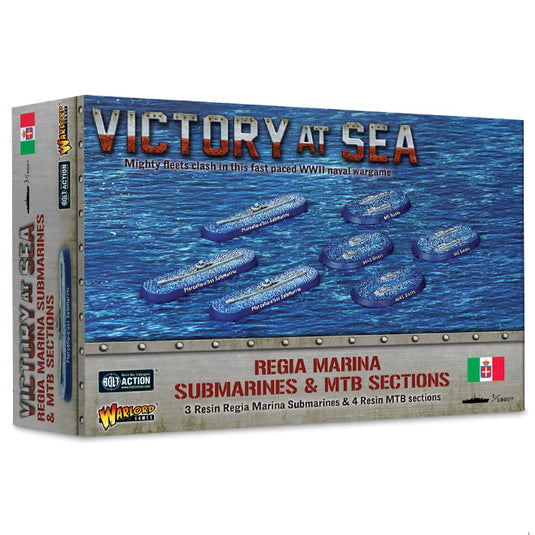


We will send you a notification as soon as this product is available again.
Submarines: Compared to a German Type VII C submarine, the Marcello-class were much larger, displacing 1,060 tons versus 769. Speed and range between the two classes were almost similar, but the Marcello-class had more torpedo tubes than the famous U-Boat. The Marcello-class should be considered one of the most successful produced by the Italian shipyards and showed very good qualities – being fast, structurally robust and relatively manoeuvrable.
MTBs: Capable of 45 knots, the Italian Motoscafo Armato Silurante (Armed Torpedo Boat) or MAS Boats were extremely active in the Mediterranean theatre. Though they were not well suited to rougher seas, they still achieved a great deal of note, including the torpedoing of HMS Capetown and an attack on the harbour of Malta, though the latter was a failure that cost two MAS Boats.
Based on German S1 class S-Boats the Italians found in the port of Cattaro in Yugoslavia, the MS Boat was larger and far more seaworthy than the MAS designs. Though not as fast, it was far better suited to long range patrols in the Mediterranean being more stable and more comfortable. It was an MS Boat that sank the largest vessel of any MTB in the war, HMS Manchester, in 1942.
Box contains:
- Marcello-class Submarines x 3
- MAS MTB sections x 2
- MS MTB sections x2
- Ship Cards
Models supplied unassembled and unpainted
What are miniatures used for in tabletop games?
How do I paint my miniatures?
What materials are miniatures typically made from?
How can I start collecting miniatures?
Where can I buy miniatures?
What are some tips for assembling miniatures?
Can miniatures be used in different games?
How should I store and transport my miniatures?
Are there any beginner-friendly miniature painting tutorials?
